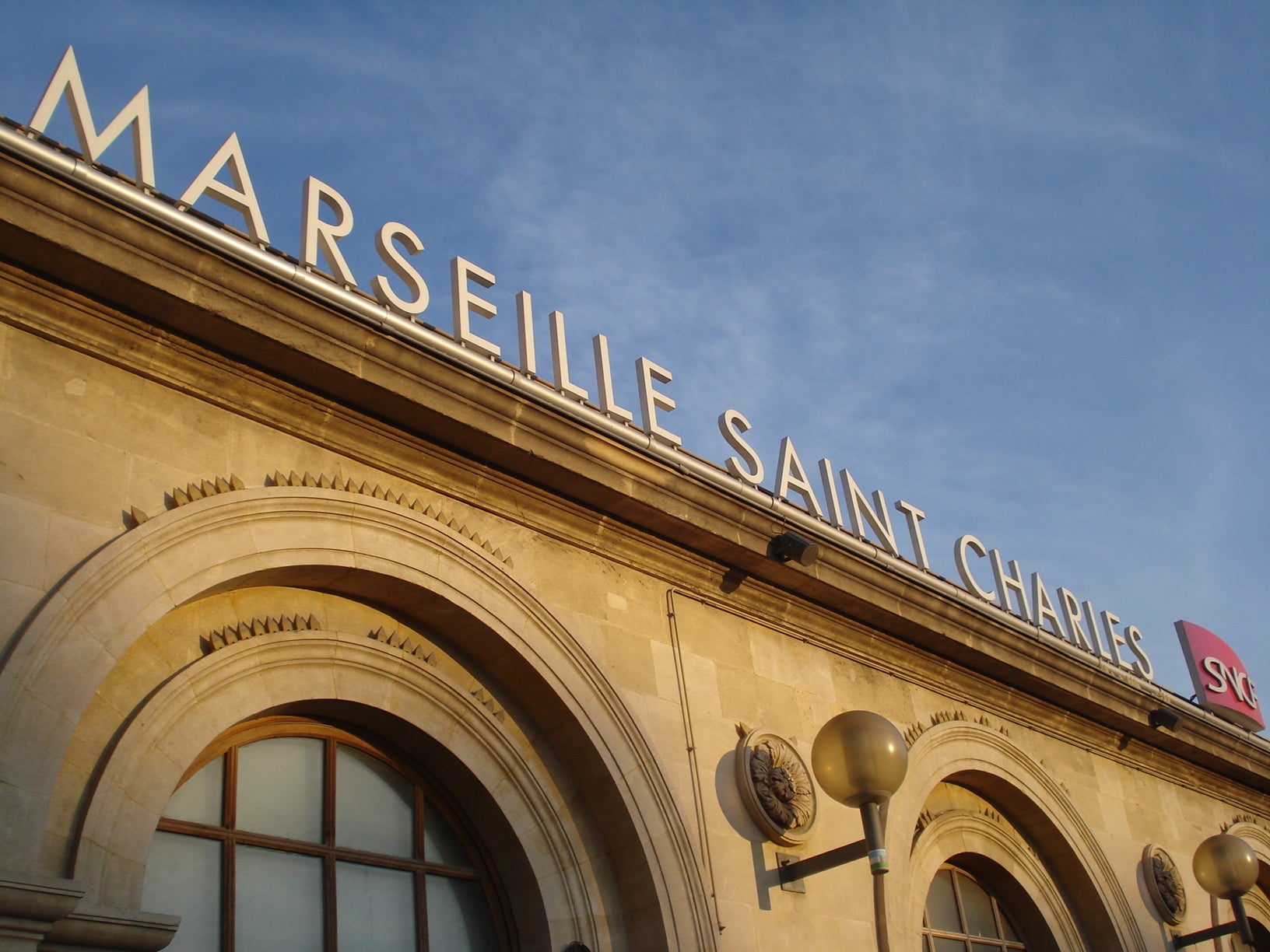[ad_1]
Turning the arrivals area into a departure zone and using smarter security kit: that is how the man in charge of London St Pancras International intends to treble passenger numbers to continental Europe.
It has already been a busy week for proponents of more international trains between the UK and Europe.
On Tuesday Italian State Railways announced plans to launch trains from London St Pancras International to Paris, in competition with Eurostar, “by 2029”; two other firms, including Sir Richard Branson’s Virgin Group, say they want to enter the market.
On Wednesday London St Pancras Highspeed (LSPH), which owns the UK’s only current international rail station as well as the fast line to the Channel Tunnel, published a study saying demand for international rail travel is set to triple by 2040.
And on Thursday, Robert Sinclair, chief executive of LSPH, has revealed to The Independent’s daily travel podcast his hopes for the future.
“Over the next 15 years, there is the potential for the market in terms of passenger numbers to triple from 11 million passengers now to 35 million passengers in 2040.
“Now, that’s driven by a number of factors, so that includes the background, demand, economic growth, population growth, and so forth.
But the key thing is that the forecasts demonstrate that there’s a real prospect of modal shift. So more and more people want to catch the train. It is more convenient – city centre to city centre connections.”
The scale of those ambitions, though, is tempered with the constraint of a station that was never designed for the intensive passport checks negotiated by the UK after Brexit, and the international departure area can strain to handle current Eurostar trains.
“If you just focus on the existing departure lounge area – or the international zone, as we call it – it is quite constrained,” Mr Sinclair said. “It’s busy, certainly at peak times.”
When the much-delayed EU entry-exit system begins to be rolled out, crowding is likely to increase – with fingerprints and facial biometrics collected from passengers.
Yet Mr Sinclair believes the Grade One-listed station can be reconfigured to handle three times as many passengers.
“There’s another area which you can’t see. It’s the arrivals area and it’s sitting just opposite on the ground floor of the station, and it’s virtually empty.”
At present all Eurostar passengers are pre-cleared for their destination, with UK and French border checks carried out at the departure station rather than on arrival. Yet the arrivals process at either end of the London-Paris Eurostar route is markedly different.
Passengers at Paris Gare du Nord simply walk out on to the main concourse. But at St Pancras, arrivals are routed through something of a labyrinth: descending one floor using travelators or lifts to enter a large and cavernous hall before emerging into the middle of the station.

“With a little bit of clever redesigning, a little bit of utilisation of the existing space that is already there, a little bit of using some of the techniques that we did in aviation, we can create the space available to develop a significantly enlarged processing area for security, for the border checks, for the entry checks into France, the exit checks also out of the UK,” said the LSPH boss.
“With changing the nature of the security equipment that we use, we can significantly increase the throughput of passengers – and that’s the key constraint that we have at the moment.
“We’re not constrained for platforms and we’re not constrained on the high speed line. So it’s passenger throughput that we need to do, but we’re confident we can do that.
“We have 50 per cent spare capacity on the high-speed line between here and Folkestone. And the Channel Tunnel has similar capacity.”
The rail equivalent of an aviation “slots” are known as a “path” – permission to run a train on a stretch of track at a particular time. Most of the paths to and from London St Pancras International are used by Southeastern, which runs a network of trains serving Kent.
“Currently, there are four paths an hour available for [international] passenger services and Eurostar use two an hour,” Mr Sinclair said. “So as you can see, there is the capacity to double the level of services, and we’re looking at potential for a fifth path as well.”

Eurostar, which has had the international rail market to itself for three decades, has its own expansion plans.
A Eurostar spokesperson said: “Emerging competition in the international high-speed rail sector is another example of positive signals indicating growing demand for rail in Europe. Growing cross-Channel rail is a race which Eurostar is firmly in, and we welcome competition.
“We’re confident in our leadership in this sector and excited about the future. That’s why we’re investing in a new fleet of 50 trains, upgrading our stations, and working with partners to improve capacity and connectivity. Our ambition is to grow the market together — giving more people the opportunity to choose rail and enjoy world-class service.”
But Eurostar has sharply reduced the number of stations it serves, blaming post-Brexit red tape. Links to Lyon, Avignon, Marseille, the French Alps and Disneyland Paris have been scrapped, and the Eurostar stations at Ebbsfleet and Ashford in Kent, as well as Calais in France, have been mothballed.
The St Pancras CEO says: “I do think there’s a significant opportunity to expand the destinations beyond just Paris, Brussels, and Amsterdam. The other countries and cities that have been identified: certainly Germany, so Cologne, possibly Dusseldorf, Frankfurt.
“Switzerland is within range as well – so Geneva, Basel, Zurich. And there’s, of course, additional destinations in France: the likes of Marseille, Toulouse, Bordeaux, etc. Possibly even Milan as well.”

Unlike airlines, though, which can launch routes at short notice, the pace of high-speed rail expansion is glacial.
“Sadly, it’s not going to happen overnight,” says Mr Sinclair. “The key there is the timeframe to actually order trains and to have trains manufactured – you can’t buy them off the shelf. So in terms of timeframe, we are looking at probably 2029 or 2030.
“Italian State Railways in their announcement this week, indicated 2029 or even by 2029. So hopefully, three, possibly four years away, that sort of timeframe.”
At present Eurostar extracts fares commensurate with its rail monopoly between London and Paris. Booking a day ahead for Friday, the lowest fare is £235 – twice as much as the cheapest flight between the capital.
Mr Sinclair says: “We’ve certainly seen evidence – clear evidence – on the Continent that with competition comes lower fares and lower ticket prices, in the order of around 30 per cent less than current prices.”
“Therein lies, I think, also the opportunity to open up a very significant market which exists because we do know that people are prepared to travel if there is a lower price point and that can open up a much larger market.”
Mr Sinclair also explained the change of name from HS1 to London St Pancras Highspeed: “We really want to be a lot more proactive in the role that we take and also using our voice to actually get behind the growth of high-speed rail and to support our operators. And we just couldn’t do that with HS1: it wasn’t known, it didn’t have any consumer recognition, and it also got confused with HS2.”
London St Pancras Highspeed is a trading name of the company HS1 Ltd, itself is a subsidiary of Helix Acquisitions Ltd, which owns the franchise to run the line and stations until 2040.
[ad_2]
Source link



